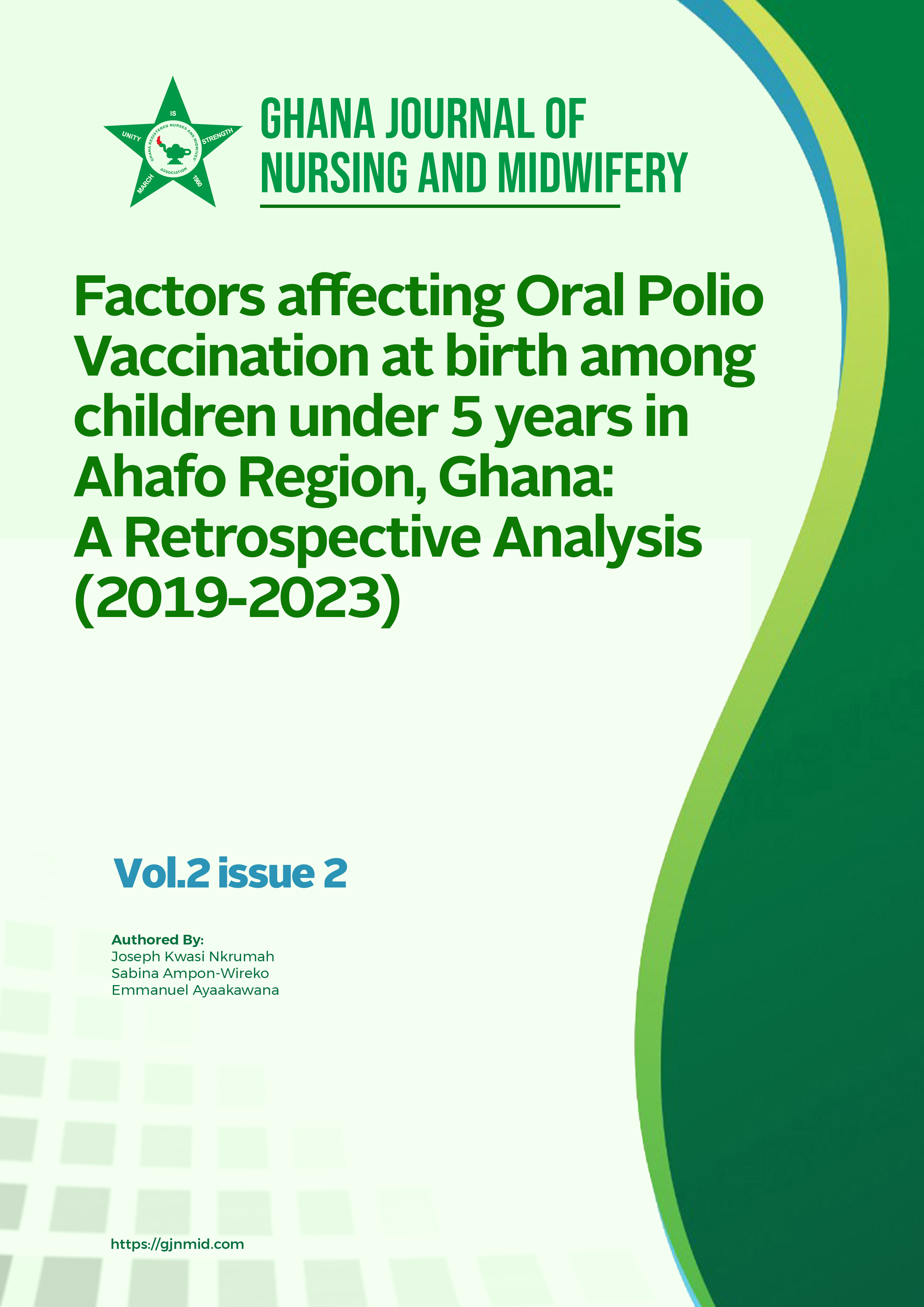Factors affecting Oral Polio Vaccination at birth among children under 5 years in Ahafo Region, Ghana: A Retrospective Analysis (2019-2023)
Main Article Content
Abstract
Background: Globally, the World Health Organization (WHO) has proposed three vaccines to be administered to newborns immediately after birth. These are; zero dose of Oral Polio Vaccine (OPV0), Bacillus Calmette-Guérin (BCG) and birth dose of hepatitis B vaccine (HepB-BD). Despite these recommendations, there are still significant differences in coverage especially with regards to OPV0 coverage across nations and among regions. In Ghana, ensuring access to newborn vaccine of OPV0 is an important indicator for immunization success and achieving sustainable development goal 3 as well as universal health coverage; but full immunization coverage still remains a challenge in some regions despite significant efforts.
General Aim: The study sought to analyze the factors affecting vaccination coverage against polio at birth among children under 5 years in Ahafo Region of Ghana. In view of this, three specific objectives were formulated; the first was to determine the association between improving vaccine accessibility on birth dose of oral polio vaccine. Second objective was to identify newborn related factors affecting birth dose of oral polio vaccine coverage and lastly, to forecast the trend of oral polio vaccine coverage at birth by the year 2030.
Methodology: The research was a quantitative study which employed a retrospective study design. Secondary data from DHIMS 2 and regional AFP surveillance case-based database from 2019-2023 were reviewed. A total of 109,070 vaccination records of children under 5 years from 2019-2023 were analyzed. Correlation, trend and projection analysis were used for data analysis. Statistical significance was set at p-value < 0.05.
Results: The results revealed that both accessibility and newborn related factors increased oral polio vaccination coverage at birth. The study showed a strong positive linear relationship (r = 0.759) between child’s birth weight < 2.5kg and OPV0 coverage but with a moderate positive linear relationship (r = 0.382) between the number vaccination centers and OPV0 coverage. However, despite the apparent correlations, the relationships were not statistically significant (P-value > 0.05). It was also estimated that OPV0 coverage in the Ahafo Region will decline by 2.6% resulting in 84.1% coverage by the year 2030 if the current trend is maintained.
Conclusion/Recommendation: The current study revealed that OPV0 coverage will remain below the national target of 95% by the year 2030 making Ghana’s certification as a polio free country problematic if nothing is done about the current situation. Hence it is recommended for robust studies to be conducted into the influence of both accessibility and newborn factors on OPV0 coverage and AFP status using larger data sets or primary data to clarify the relationships for informed decision making. Health facilities should also abolish the practice of scheduling newborns for birth dose vaccines only on some specific days within the week. The current practice leads to increase in the number of defaulters since most parents will refuse to report within the recommended 2 weeks but may only show up for 40 days postnatal by which time OPV0 would have elapsed.
Downloads
Article Details

This work is licensed under a Creative Commons Attribution 4.0 International License.
Copyright (c) 2024
This work is licensed under a Creative Commons Attribution 4.0 International License.






